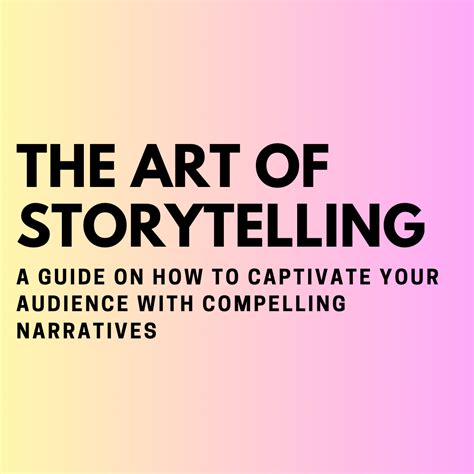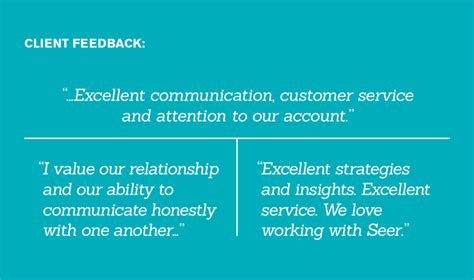Does your blog need a little boost? If you're looking to captivate your readers and enhance your online presence, you've come to the right place. Crafting engaging blog content is essential in today's hyper-connected world, where countless blogs compete for attention. By employing the right strategies and unleashing your creativity in writing, you can establish yourself as an authority in your niche and foster a loyal readership.
So how do you create captivating blog content? First and foremost, it's crucial to understand your target audience and what resonates with them. Tailoring your content to their interests and needs will keep them coming back for more. Additionally, employing storytelling techniques can be incredibly powerful in captivating your readers' attention. Through relatable anecdotes or personal experiences, you create a connection with your audience, giving them a reason to stay engaged.
Another approach to create compelling blogs is by incorporating visuals. Humans are visual beings, and using relevant images or videos can effectively convey your message and increase user engagement. Additionally, make sure your writing is concise, organized, and easy to digest. Break up lengthy paragraphs with subheadings, bullet points, or numbered lists to make your content more scannable and accessible to your readers.
Furthermore, incorporating a call-to-action in your blog can significantly boost user engagement and help you achieve your desired outcome. Whether it's encouraging readers to share your content, leave a comment, or sign up for a newsletter, a well-crafted call-to-action can drive action and foster a sense of community. Moreover, don't be afraid to experiment with different formats such as infographics, podcasts, or interviews to provide diverse and engaging content that keeps your readers hooked.
Connect with Your Readers on a Personal Level: Understanding Your Audience

Creating engaging blog content requires more than just well-written articles or eye-catching visuals. To truly capture the attention of your readers and boost your online presence, it's crucial to establish a personal connection with your audience. By understanding their needs, preferences, and interests, you can tailor your blog content to meet their expectations effectively.
To truly connect with your readers on a personal level, it's essential to conduct thorough research and gather insights about your target audience. Start by identifying their demographics, such as age, gender, location, and profession. This information will help you craft content that resonates with specific groups of individuals and addresses their particular challenges and interests.
Beyond demographic data, go beyond the surface level to dig deeper into your audience's psychographics. Determine what motivates them, what their values are, and what type of content they find most valuable. This understanding will enable you to communicate with your readers in a way that feels personalized and relatable, fostering a sense of trust and loyalty.
One effective way to gain insights into your audience's interests is through social media platforms. Engage with your readers through comments, direct messages, or surveys, and pay attention to the topics and questions they raise. Use this information to structure your blog content around these interests and provide solutions to their problems.
In addition to social media, make use of analytics tools to monitor the performance of your blog posts. This data will shed light on which topics are resonating with your audience and driving engagement. Use these insights to refine your content strategy and create blog posts that align with your readers' preferences, boosting their interest and your online presence.
Ultimately, understanding your audience and connecting with them on a personal level requires ongoing effort and adaptability. Continuously monitor and analyze your readers' feedback and adjust your content accordingly. By doing so, you can cultivate a loyal community of engaged readers who trust and rely on your blog for valuable insights and information.
Catch the spotlight: Attract attention with irresistible blog titles
When it comes to creating captivating blog content, one essential element that can make or break your success is the headline. The title of your blog post is the first thing readers see, and it plays a crucial role in grabbing their attention and enticing them to click and read more.
In this section, we will explore the art of crafting catchy headlines that immediately catch the reader's eye. We will delve into the techniques and strategies that will help you create irresistible blog titles that stand out from the crowd.
- Unleash the power of intrigue: Construct headlines that pique curiosity and leave readers longing for more.
- Magnetic language: Discover the charm of words and phrases that emotionally connect with your audience.
- Master the art of brevity: Learn how to convey your message effectively in a concise, snappy headline.
- Tap into the emotions: Explore the emotional triggers that can significantly impact reader engagement through your titles.
- The element of surprise: Embrace the unexpected and surprise your readers with unexpected twists and turns in your headlines.
- Pack a punch with power words: Discover the persuasive power of carefully chosen words that ignite curiosity and action.
- Strike a chord with humor: Explore the art of injecting humor into your blog titles to instantly stand out and connect with your audience.
- Use numbers to your advantage: Learn how incorporating numbers in your headlines can make your content more appealing and easily digestible.
- Tap into the reader's aspirations: Craft headlines that offer solutions, guidance, or inspiration, tapping into what your audience wants to achieve.
- The force of urgency: Harness the power of time-sensitive language to create a sense of urgency and encourage immediate action.
With these invaluable tips and techniques, you'll be well-equipped to create blog titles that captivate your readers and leave a lasting impression. Prepare to witness a surge in engagement and take your online presence to new heights!
Storytelling: Weave narratives that captivate and immerse your audience

In the realm of content creation, the art of storytelling holds a powerful allure, enabling you to connect with your audience on a deeper level. By skillfully weaving narratives, you have the potential to captivate and immerse your readers, transforming them into loyal followers. In this section, we will explore the essential elements of storytelling and how to incorporate them into your blog content.
- Create compelling characters: Characters are the heart and soul of any story. Develop relatable and memorable personas that your audience can connect with and root for.
- Build a captivating plot: Craft a storyline that keeps your readers engaged from start to finish. Incorporate unexpected twists and turns to maintain their interest and curiosity.
- Set the stage: Describe vivid and immersive settings to transport your audience into the world of your story. Utilize sensory details to paint a picture in their minds.
- Establish a narrative voice: Find a unique voice for your storytelling that reflects the tone and personality of your brand. Consistency in voice will help create a cohesive and memorable experience for your readers.
- Use emotional storytelling: Appeal to your audience's emotions by infusing your narratives with heartfelt moments, relatable experiences, and thought-provoking situations.
- Employ the power of suspense: Keep your readers on the edge of their seats by incorporating elements of suspense and tension in your storytelling. Leave them wanting more with well-placed cliffhangers.
- Utilize visuals: Enhance your storytelling with visually appealing elements such as images, infographics, or videos. Visuals not only add depth to your narrative but also provide a visual break for your readers.
- Inject humor: Infusing humor into your storytelling can lighten the mood and create a memorable experience for your audience. Use witty dialogue or humorous anecdotes to entertain and engage your readers.
- Invoke curiosity: Spark curiosity within your readers by posing intriguing questions or introducing mysteries in your narratives. Leave breadcrumbs along the way to keep them invested and eager for more.
- End with a powerful message: Conclude your stories with a strong and impactful message. Leave your readers with a lasting impression or a call to action that resonates with them.
By incorporating these storytelling techniques into your blog content, you can transform your posts into captivating narratives that connect and resonate with your audience. Remember, a well-told story has the power to leave a lasting impact and elevate your online presence.
Use Visuals: Enhance Your Blog Posts with Captivating Images and Compelling Videos
In today's digital landscape, incorporating captivating visuals into your blog posts is essential for grabbing the attention of your readers and keeping them engaged. By utilizing eye-catching images and compelling videos, you can enhance the overall appeal of your content and make it more visually appealing.
When it comes to selecting visuals for your blog posts, it's important to choose high-quality images and videos that are relevant to your topic. Visuals that are grainy or pixelated can be off-putting to readers and may detract from the overall experience. Additionally, make sure the visuals you use align with the tone and message of your blog post.
Images can be used to illustrate key points, break up text, and create visual interest. Consider using infographics, charts, or diagrams to present data in a more visually appealing way. Including relevant images throughout your blog post can help enhance comprehension and make your content more memorable.
Similarly, videos can be a powerful tool for creating engaging blog content. They allow you to provide demonstrations, interviews, or tutorials, bringing your blog post to life in a dynamic way. Videos can also help break up long chunks of text and provide a different format for readers to consume your content.
When incorporating visuals into your blog posts, it's important to optimize them for web viewing. Compressing images to reduce file size without sacrificing quality and using video hosting platforms or embedding services can help improve loading times and ensure a smooth user experience.
In summary, by using captivating images and compelling videos in your blog posts, you can enhance the visual appeal of your content, keep readers engaged, and make a lasting impact. Remember to choose high-quality visuals that are relevant to your topic, optimize them for web viewing, and use them strategically throughout your blog posts.
Be Genuine: Share Personal Experiences and Thoughts to Establish Trust

Creating authentic blog content goes beyond simply providing information or insights. It involves sharing your personal experiences and thoughts to establish a genuine connection with your audience. By opening up and sharing your unique perspectives, you can build trust and credibility among your readers.
Instead of relying solely on generic advice or impersonal content, expressing your authentic self can give your blog a distinct voice. When you share personal anecdotes and reflections, you show your audience that you are a real person who has gone through similar experiences or faced similar challenges. This builds a sense of relatability, making your content more engaging and trustworthy.
In addition to sharing personal experiences, it is important to convey your genuine thoughts and opinions. Providing well-informed insights that reflect your true beliefs and values can make your content more meaningful. However, it is crucial to maintain a balance between expressing your opinions and being respectful of differing perspectives. By doing so, you demonstrate your honesty and openness, further strengthening the trust you establish with your readers.
Authenticity also extends to the style and tone of your writing. Instead of striving for perfection or trying to sound overly professional, aim for a conversational and relatable tone. Write as if you are having a conversation with a friend, using accessible language and injecting your personality into your writing. This creates a more enjoyable and engaging reading experience for your audience.
Remember, being authentic doesn't mean baring your entire personal life or sharing anything too personal. It means finding the right balance between sharing relevant personal experiences and thoughts that resonate with your target audience. By doing so, you can create a space where your readers feel connected, understood, and more likely to trust your advice and recommendations.
Engage with Comments: Respond to reader feedback and encourage discussions
One of the key elements of creating captivating blog content is to actively engage with your readers through comments. Reader feedback provides valuable insights and allows you to establish a connection with your audience. By responding to comments and encouraging discussions, you can foster a sense of community and create a more interactive experience for your readers.
Respond Promptly: When readers take the time to comment on your blog posts, it is essential to acknowledge their contribution by responding promptly. Whether it's a question, compliment, or criticism, make sure to show that you value their input and appreciate their engagement. A timely response not only demonstrates your dedication to reader interaction but also encourages further conversation.
Be Genuine and Thoughtful: When crafting your responses to reader comments, be authentic and considerate in your approach. Take the time to understand their perspective and address their concerns or queries with genuine care. By providing thoughtful responses, you not only show your expertise but also build trust and credibility with your readers.
Encourage Dialogue: Creating a dialogue among your readers is a powerful way to enhance engagement and foster a sense of community. Encourage readers to respond to each other's comments by posing follow-up questions or inviting them to share their experiences. By actively promoting discussions, you create an interactive space where readers feel valued and are more likely to return.
Moderate with Respect: While encouraging discussions is essential, maintaining a respectful and inclusive environment is equally important. Moderate the comments section to ensure that all interactions remain respectful and on-topic. Address any inappropriate or offensive behavior promptly and respectfully, and set clear guidelines to encourage constructive conversations.
Acknowledge Positive Feedback: When you receive compliments or positive feedback from readers, express your gratitude and appreciation. Take the time to acknowledge their kind words and let them know how much their support means to you. By fostering a positive atmosphere, you encourage ongoing engagement and loyalty among your audience.
Show Empathy: Reader feedback may sometimes include concerns or criticism. In such instances, it is crucial to respond with empathy and understanding. Acknowledge their perspective, validate their feelings, and offer support or solutions when appropriate. By showing empathy, you demonstrate that you genuinely care about your readers and their experiences.
Highlight Interesting Comments: Another way to encourage engagement is by featuring interesting or insightful reader comments in your blog posts. Select compelling comments that add value to the discussion and showcase them within your content. This not only provides recognition to the contributors but also encourages others to participate via comments.
Ask Questions: Prompt your readers to share their thoughts and opinions by posing relevant questions within your blog posts. This encourages readers to express their viewpoints and engage in meaningful discussions. By actively seeking their input, you create a space where readers feel heard, valued, and inspired to contribute.
Extend the Conversation: To further engage with your readers, consider extending the conversation beyond the comment section. Invite them to connect with you on social media, join mailing lists, or participate in live Q&A sessions or webinars. By providing additional avenues for interaction, you can enhance the overall experience for your audience and strengthen your online presence.
Continuously Monitor and Learn: Lastly, make it a habit to regularly monitor and analyze the comments section of your blog. Gain insights from reader feedback and adapt your content or approach accordingly. Learn from the discussions and use them to refine your writing, further engage your readers, and continuously improve the quality of your blog content.
Engaging with comments is not only about responding to reader feedback but also about fostering a sense of community and creating a space for meaningful conversations. By actively participating in discussions, you can strengthen your online presence and establish a loyal readership.
Incorporate SEO: Optimize Visibility in Search Results

In order to enhance your online presence and attract more readers to your blog, it is crucial to incorporate effective search engine optimization (SEO) techniques into your content strategy. By optimizing your blog content, you can improve its visibility in search engine results and increase organic traffic to your website.
1. Keyword Research: | Conduct thorough research to identify relevant keywords and phrases that are commonly used by your target audience when searching for content similar to what your blog offers. Incorporate these keywords strategically throughout your blog posts to increase the chances of your content being discovered by search engines. |
2. Meta Tags Optimization: | Optimize your meta tags, including the title tag and meta description, to provide search engines and potential readers with a concise and compelling summary of your blog content. By including relevant keywords in your meta tags, you can improve the click-through rate and attract more traffic to your blog. |
3. High-Quality Content: | Create engaging and informative content that offers value to your readers. Search engines prioritize high-quality content, so ensure your blog posts are well-written, easy to read, and provide actionable insights. By consistently delivering valuable content, you can increase the likelihood of your blog ranking higher in search results. |
4. Internal and External Linking: | Incorporate internal links within your blog posts to help search engines understand the structure and relevance of your content. Additionally, include external links to authoritative sources that support your claims and provide further information to your readers. These linking strategies can enhance the credibility of your blog and improve its visibility in search results. |
5. Mobile Optimization: | With the increasing use of mobile devices for browsing the internet, it is essential to optimize your blog for mobile responsiveness. Ensure your website is mobile-friendly, loads quickly, and displays well on different screen sizes. This optimization not only improves the user experience but also helps search engines rank your blog higher in mobile search results. |
6. Social Media Integration: | Integrate social media sharing buttons into your blog posts to encourage your readers to share your content across various platforms. Social media shares can increase the visibility and reach of your blog, leading to more backlinks and improved search engine rankings. |
7. Image Optimization: | Optimize the images used in your blog posts by providing descriptive file names and alt tags that include relevant keywords. This optimization helps search engines understand the context of your images and increases the likelihood of your blog appearing in image search results. |
8. Regular Content Updates: | Consistently update your blog with fresh and relevant content. Search engines favor websites that regularly publish new content, as it demonstrates their authority and relevance. By maintaining an active blogging schedule, you can increase your blog's visibility in search results and attract a loyal readership. |
9. Page Loading Speed: | Optimize your blog's page loading speed by minimizing file sizes, leveraging caching techniques, and optimizing code. A fast-loading website not only improves the user experience but also signals to search engines that your blog provides a positive browsing experience, potentially resulting in higher search rankings. |
10. Monitor and Analyze Results: | Regularly monitor and analyze the performance of your blog using tools like Google Analytics. Assess the keywords that drive the most traffic to your blog, identify areas for improvement, and adapt your SEO strategy accordingly. By continually evaluating and optimizing your blog content, you can effectively increase your online visibility and attract a larger audience. |
Delivering Value: Share Actionable Insights, Valuable Advice, and Practical Suggestions to Maximize Reader Benefits
In this section, we will focus on strategies to provide significant value through your blog content. By offering insightful tips, practical advice, and unique perspectives, you can capture and retain readers' attention, while establishing yourself as a valuable resource.
1. Empower and Engage through Actionable Insights:
- Unleash a treasure trove of valuable information that readers can put into action.
- Provide step-by-step guides and tutorials to empower your audience.
- Highlight practical examples and case studies to demonstrate real-life applications.
2. Share Tailored Advice:
- Recognize your audience's specific needs and address them directly.
- Develop personalized content that speaks to their challenges, goals, and aspirations.
- Offer customized solutions and recommendations based on their unique circumstances.
3. Offer Insider Insights:
- Unlock exclusive industry knowledge and share insights from your personal experiences.
- Provide behind-the-scenes glimpses into your expertise, processes, or strategies.
- Expose readers to insider tips and lesser-known techniques to give them a competitive edge.
4. Package Expertise into Lists:
- Create well-structured and organized lists, such as "Top 10 Tips" or "Must-Have Tools."
- Summarize key information concisely, allowing readers to quickly gain valuable knowledge.
- Include relevant resources, links, or recommendations to enrich the content further.
5. Curate Inspiring Stories:
- Collect and present success stories, inspiring anecdotes, or transformative experiences.
- Showcase real-life examples that resonate emotionally and motivate readers to take action.
- Highlight the lessons learned and provide actionable takeaways.
6. Highlight Emerging Trends:
- Stay up-to-date with industry developments and forecast future trends.
- Spotlight new tools, techniques, or strategies that can benefit your readers.
- Offer insights into the potential impact of these emerging trends on their own endeavors.
7. Tap into Expert Interviews:
- Conduct interviews with industry experts or thought leaders to gain unique perspectives.
- Share their wisdom and viewpoints on relevant topics.
- Extract practical advice and actionable insights that your readers can apply.
8. Include How-To Guides:
- Break down complex processes into simple, step-by-step instructions.
- Use visuals, diagrams, or videos to enhance clarity and understanding.
- Empower readers to replicate actions independently by providing detailed guidance.
9. Foster Interactive Discussions:
- Encourage readers to share their thoughts, experiences, and questions in the comments section.
- Engage actively with your audience by responding promptly and thoughtfully.
- Utilize feedback and discussions to create future content that directly addresses their needs.
10. Offer Valuable Resources:
- Compile a list of recommended books, tools, websites, or courses that add value.
- Provide comprehensive reviews and unbiased evaluations of these resources.
- Help readers make informed decisions by guiding them towards trustworthy and beneficial materials.
By consistently delivering valuable content, you will not only attract and retain readers but also establish yourself as an authoritative figure in your field. Remember, sharing practical tips, offering valuable advice, and presenting insightful perspectives will significantly enhance the value your audience derives from your blog.
Utilize Social Media: Promote your blog content across various social platforms

Embracing the power of social media can significantly enhance the exposure and reach of your blog. By leveraging different social platforms, you can effectively engage with your target audience and drive traffic to your blog. Tap into the vast potential of social media to amplify your online presence and attract more visitors to your content.
1. Share on Facebook: Connect with your audience by sharing your blog posts on the world's largest social networking site. Craft compelling captions and use eye-catching visuals to capture the attention of your followers. Encourage them to like, comment, and share your posts to expand your reach.
2. Tweet on Twitter: Utilize the power of concise and impactful messaging on Twitter. Craft engaging tweets that highlight the key points or intriguing aspects of your blog posts. Use relevant hashtags to optimize discoverability and encourage retweets to extend your message to a wider audience.
3. Post on LinkedIn: Leverage the professional networking platform to establish your authority and connect with industry professionals. Share your blog posts in relevant LinkedIn groups and engage in discussions to attract a targeted audience. Tailor your content to align with the professional tone of the platform.
4. Snap on Instagram: Utilize the visually-driven platform to showcase your blog content through captivating images and engaging captions. Create a visually cohesive feed that reflects your branding. Incorporate relevant hashtags and engage with your followers to foster a sense of community around your content.
5. Pin on Pinterest: Pinterest is a powerful platform for curating and organizing visual content. Create visually appealing pins that represent your blog posts and optimize them with relevant keywords. Join relevant group boards to increase the visibility and reach of your pins.
6. Collaborate on YouTube: Harness the potential of video content by creating engaging and informative videos related to your blog posts. Upload them on YouTube and embed them in your blog for a dynamic user experience. Collaborate with other YouTubers to tap into their audience and expand your reach.
7. Engage on Quora: Identify relevant questions on Quora that are related to your blog posts. Provide valuable insights and subtly promote your blog content as a resource for further information. Establish yourself as an authority in your field by consistently providing helpful answers.
8. Explore Reddit: Discover subreddits that align with your blog's niche and participate in discussions. Share your blog posts when appropriate and add value to the community. Keep in mind the guidelines and self-promotion rules for each subreddit to avoid being flagged as spam.
9. Connect on Snapchat: Utilize the ephemeral nature of Snapchat to share behind-the-scenes glimpses of your blog creation process. Create exclusive content or promotions for your Snapchat followers to foster a sense of exclusivity and encourage engagement.
10. Utilize Influencer Marketing: Collaborate with influencers in your industry to promote your blog content. Their endorsement and reach can significantly boost the visibility of your blog. Offer them exclusive content or services in exchange for promoting your posts to their audience.
By effectively utilizing a diverse range of social media platforms, you can promote your blog content to a wider audience and significantly boost your online presence. Experiment with different strategies and adapt them to suit your target audience and goals. Consistency and engagement are key in building a robust online community around your blog.
FAQ
Why is knowing your audience important for creating engaging blog content?
Knowing your audience is crucial because it helps you tailor your blog content to their specific interests, needs, and preferences. By understanding who your target readers are, you can create content that resonates with them, addresses their pain points, and provides value. This enhances the chances of engaging your audience and keeping them coming back for more. Without knowing your audience, you risk creating content that is generic or irrelevant to their needs, which may result in readers losing interest and seeking content elsewhere.
How can incorporating visuals boost the engagement of my blog content?
Incorporating visuals, such as images, videos, or infographics, can significantly enhance the engagement of your blog content. Visuals not only make your blog posts more visually appealing, but they also help break up the text, making it easier for readers to digest the information. Visuals can also convey messages or emotions more effectively than words alone, capturing the attention and interest of your readers. Additionally, visuals can be shared easily on social media platforms, expanding the reach of your content and attracting more readers.
Why is storytelling important for creating engaging blog content?
Storytelling is essential for creating engaging blog content because it helps capture the attention and interest of your readers. People are naturally drawn to stories as they provide a human element and generate emotional connections. By incorporating storytelling techniques in your blog posts, you can make your content more relatable, memorable, and impactful. Stories also have the power to evoke emotions and create a deeper connection between you and your readers. This engagement can result in increased readership, social shares, and a stronger online presence.
How does encouraging reader interaction contribute to creating engaging blog content?
Encouraging reader interaction is vital for creating engaging blog content because it helps foster a sense of community and encourages active participation. By asking questions, inviting comments, or initiating discussions, you encourage your readers to share their thoughts, opinions, and experiences. This not only creates a more interactive and dynamic reading experience but also strengthens the connection between you and your readers. Additionally, reader interaction can generate valuable feedback, spark new ideas, and even inspire future blog posts based on their input.



